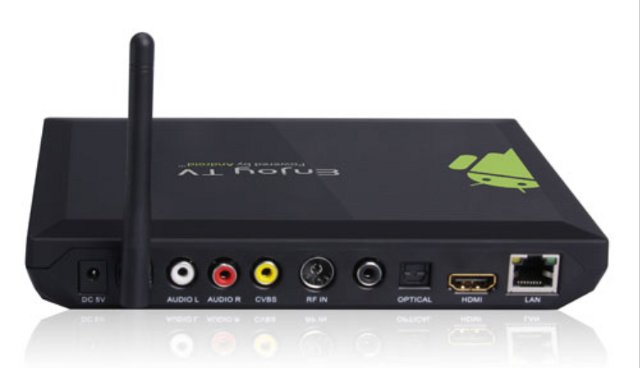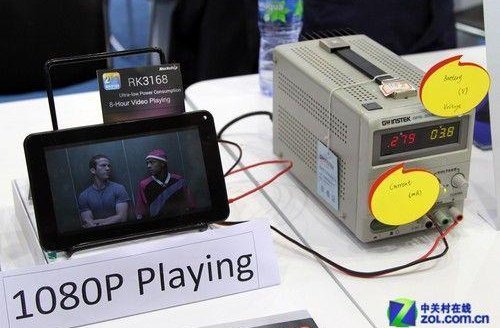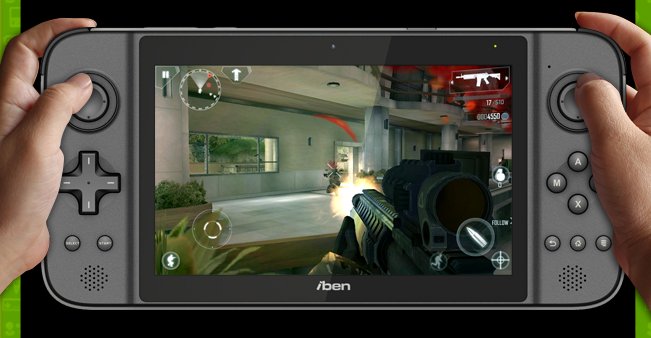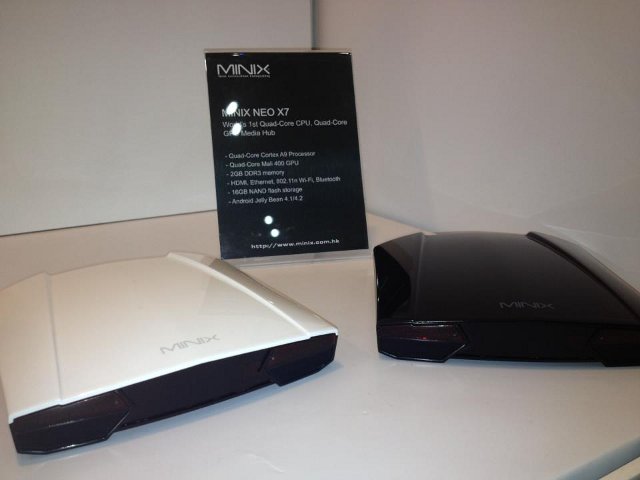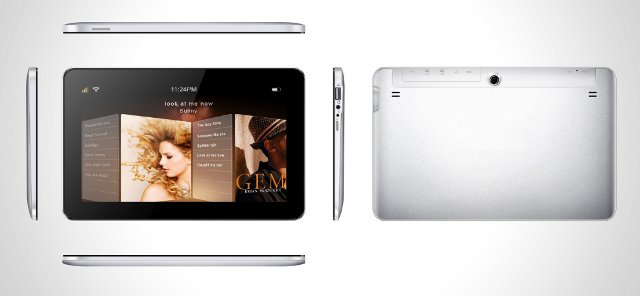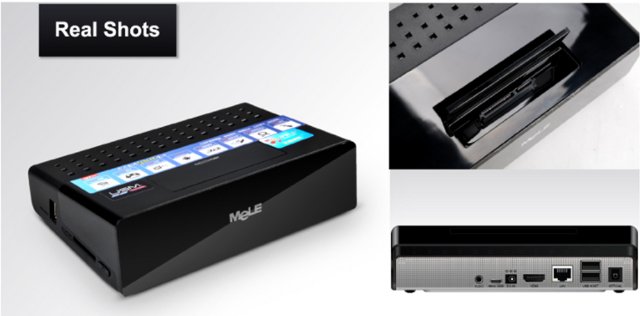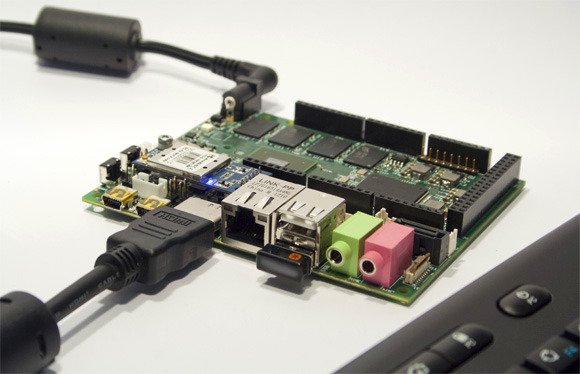Thanks to Actions Semiconductor ATM7029, you can now purchase quad core Android tablets for less than $100. They were at the Hong Kong Electronics Fair on 12-15 April, 2013, mainly to talk about ATM7029 capabilities such as up 6 simultaneous video playback, Android 4.2.2 support with Miracast, 1.3 GHz CPU clock (to be pushed to 1.5GHz later on), and so on. They also announced ATM7023A, a dual core Cortex processor targeting low costs tablets with the following characteristics: Dual core Cortex A9 family up to 1.2 GHz. 100% compatible with ARMv7 instructions Android 4.2.2 + Linux 3.4 OS. Seamless upgrade 3D GPU Advanced PMU, LPD GEN II architecture integrated, standby power over 1000 hours with a 8000 mAh battery. Display Interface – RGB, LVDS, MIPI support. Resolution up to 2048×1536 Video Decoding – 1080p60 Video Encoding – H.264 1080p30 Six videos playing simultaneously Quick Boot technology – Boots within 10 […]
Android Set-top Boxes With Digital Satellite TV Receiver (DVB-S2)
There are now plenty of Android set-top boxes or HDMI TV sticks, but if you want to watch digital satellite or terrestrial TV, the options are limited. If you already have a satellite receiver at home, you could buy an Android set-top box with an HDMI input such as Huawei MediaQ M310, or use a DVB-S2 USB adapter, but you may need to acquire both the kernel source and DVB driver to compile it for your device. So for now, the last option is currently reserved for ODM/OEM as mentioned on Geniatech store. But today, I’m going to write about an Android set-top boxes that comes with a satellite receiver (DVB-S2). They are all based on AMLogic AML8726-M1/M3, and models include: Geniatech ATV1100B Hybrid DVB Box – Multiple standards STV-502 – DVB-S2 Monolithelec MINGLE – DVB-S2 Geniatech ATV1100B Key Features: SoC – AmLogic AML8726-M1 ARM Cortex A9 @ 800MHz System […]
Rockchip Unveils RK3168 Dual Core Processor, Showcases $10 Miracast Adapter
Rockchip is currently at the Hong Kong Electronics Fair showing off their RK3188 quad core processor, and corresponding products such as tablets, gamepads, HDMI TV dongles, etc… Business seems good as they already received orders for 800k pieces in about a month, and they expect to sell 10 to 15 millions over the course of the year. The company had also a few RK3066 devices on display, but more interestingly they announced RK3168, which also a dual core Cortex A9 processor, but with lower power consumption thanks to 28nm HKMG process, instead of the 40nm process used for Rockchip RK3066. They have a tablet prototype without battery connected to a power supply to show the power consumption, and the tablet under test consumes 280mA @ 3.8V (About 1 Watt) when decoding 1080p videos with the display brightness set to about 50%. Chen Feng, Vice President at Rockchip, explains that with […]
Allwinner Showcases A20, A31 and A31s Devices: Tablets, Phablets, Mini PCs, Projectors, Laptops, Development Boards…
Charbax is now at the China Sourcing Fair in Hong Kong, meeting and interviewing lots of Chinese companies. One of the companies I’ve been following is AllWinner because of their low-cost ARM Cortex processors, found in many Android devices, which somewhat support Linux. In the video below, we first learn they have shipped 1 million A31 in the last 4 months, A31s and A20 processors have been available since the end of March for phablets, and A20 price is supposed to be very close to A10. So products based on AllWinner A10 could be upgraded to AllWinner A20 for just a few dollars more as both SoC are (nearly) pin to pin compatible. By the way, if you’re interested in the Cubieboard, you may want to see this. We then go through lots of devices based on AllWinner SoC, albeit too fast to get many details, but the list may […]
MINIX To Launch Four New NEO Set-Top Boxes: X5+, X5 Mini, X3 & X7
MINIX is a company relatively well know for its Neo G4 mini PC and Neo X5 Android set-top box based on Rockchip RK3066. They’ve now announced 4 new devices for HKTDC Electronic Fair in Hong Kong: Neo X5+ – RK3066 Set-top box based on Neo X5, but with 2GB RAM instead of 1GB RAM. Neo X5 Mini – Low cost version of the Neo X5 with 8GB NAND Flash instead of 16GB, and missing Bluetooth support. Neo X3 – Android 4.1/4.2 Set-top box powered by AMLogic AML8726-M3 with 1GB RAM, 4GB Flash, and 802.11n Wi-Fi. No word about Ethernet support. Neo X7 – Android Media Player based on Rockchip RK3188 with 2GB RAM, 16 GB RAM, HDMI, Ethernet, Wi-Fi 802.11n and Bluetooth support. The full specifications are not available yet, but the design of the box is nice, although it might not be to the taste of everybody, and I […]
WonderMedia Announces 7″ and 10.1″ Reference Tablets Powered by WM8980 SoC
WonerMedia has unveiled 2 turnkey tablet solutions for manufacturers powered by their WM8980 SoC combining a dual Cortex A9 processor, and an ARM Mali 400MP2 GPU. One design is based on a 10.1″ display, and the other on a 7″ display. The key features of WonderMedia tablet reference designs are as follows: Up to 1.4GHz WM8980 ARM Cortex- A9 Dual-Core processor ARM Mali-400 Dual-Processor GPU Up to 2GB DDR3 RAM and 16GB NAND Flash Thin design of only 4.5mm on top edge and 3mm on side edge Weight – 650g for 10.1” and 370g for 7” designs Support for up to 8M rear camera and 2M front camera WiFi and 3G cellular networks support I/O – 1x Mini HDMI port, 1x Micro SD port (up to 32GB), 1x USB and Micro-USB OTG port, and 1x 3.5mm stereo headphone jack Battery – Up to 8000mAh battery for 10.1″ and up to […]
Mele A1000G Quad Set-Top Box Features AllWinner A31 SoC
Mele A1000 Android set-top box based on AllWinner A10 is one the best platform to play with Linux on ARM, thanks to its low cost, numerous features, hackability, and the work of the developers’ community on arm-netbook mailing list, and now in sunxi-linux. I like it so much it’s the first item in my short list of hackable gadgets. However, the hardware specifications of the original Mele A1000 may be too weak for some of today’s applications. So I’m pleased the announce that Mele A1000G Quad is now available (for pre-order) with AllWinner A31 quad core Cortex A7 SoC, 2GB RAM and 8GB Flash. Here are the specifications for Mele A1000 Quad STB: SoC – AllWinner A31 quad core Cortex A7 @ 1.5GHz + PowerVR SGX544MP2 GPU System Memory – 2GB DDR3 RAM Storage 8GB Flash SD card slot SATA connector (most probably via a USB to SATA chipset) Video […]
UDOO Single Board Computer Features Freescale i.MX6 Dual/Quad and Atmel SAM3 MCU
Have you ever dreamed of a single board with the power of 4 Raspberry Pi and Arduino Due functionality? This dream should soon become reality thanks to UDOO single board computer. This open source hardware board is powered by Freescale i.MX6 Dual or Quad with 1GB RAM, as well as Atmel SAM3 Cortex M3 MCU that provides access to Arduino compatible headers. Here are the specifications of the board: SoC – Freescale i.MX6 ARM Cortex-A9 CPU Dual/Quad Core @ 1GHz + Vivante GPU MCU – Atmel SAM3X8E ARM Cortex-M3 (same as Arduino Due) System Memory – 1GB DDR3 Storage – micro SD (boot device) + SATA (i.MX6 Quad only) Video Output – HDMI and LVDS + Touch (I2C signals) Audio I/O – Analog Audio and Mic Expansion Headers – 54 Digital I/O + Analog Input (Arduino-compatible R3 1.0 pinout) Connectivity Ethernet RJ45 (10/100/1000 MBit) WiFi Module USB – mini USB […]



